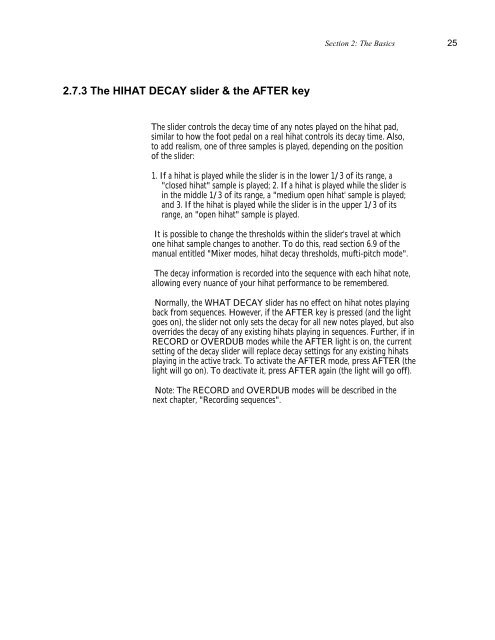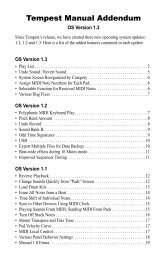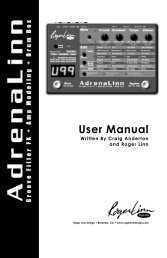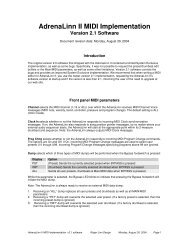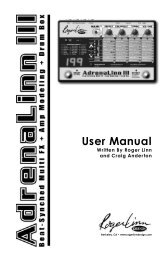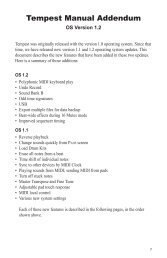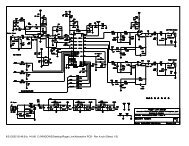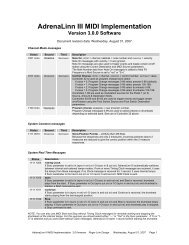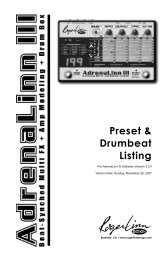Akai MPC-60 v2.0 Owners Manual.pdf - Fdiskc
Akai MPC-60 v2.0 Owners Manual.pdf - Fdiskc
Akai MPC-60 v2.0 Owners Manual.pdf - Fdiskc
You also want an ePaper? Increase the reach of your titles
YUMPU automatically turns print PDFs into web optimized ePapers that Google loves.
Section 2: The Basics 25<br />
2.7.3 The HIHAT DECAY slider & the AFTER key<br />
The slider controls the decay time of any notes played on the hihat pad,<br />
similar to how the foot pedal on a real hihat controls its decay time. Also,<br />
to add realism, one of three samples is played, depending on the position<br />
of the slider:<br />
1. If a hihat is played while the slider is in the lower 1/3 of its range, a<br />
"closed hihat" sample is played; 2. If a hihat is played while the slider is<br />
in the middle 1/3 of its range, a "medium open hihat' sample is played;<br />
and 3. If the hihat is played while the slider is in the upper 1/3 of its<br />
range, an "open hihat" sample is played.<br />
It is possible to change the thresholds within the slider's travel at which<br />
one hihat sample changes to another. To do this, read section 6.9 of the<br />
manual entitled "Mixer modes, hihat decay thresholds, mufti-pitch mode".<br />
The decay information is recorded into the sequence with each hihat note,<br />
allowing every nuance of your hihat performance to be remembered.<br />
Normally, the WHAT DECAY slider has no effect on hihat notes playing<br />
back from sequences. However, if the AFTER key is pressed (and the light<br />
goes on), the slider not only sets the decay for all new notes played, but also<br />
overrides the decay of any existing hihats playing in sequences. Further, if in<br />
RECORD or OVERDUB modes while the AFTER light is on, the current<br />
setting of the decay slider will replace decay settings for any existing hihats<br />
playing in the active track. To activate the AFTER mode, press AFTER (the<br />
light will go on). To deactivate it, press AFTER again (the light will go off).<br />
Note: The RECORD and OVERDUB modes will be described in the<br />
next chapter, "Recording sequences".


